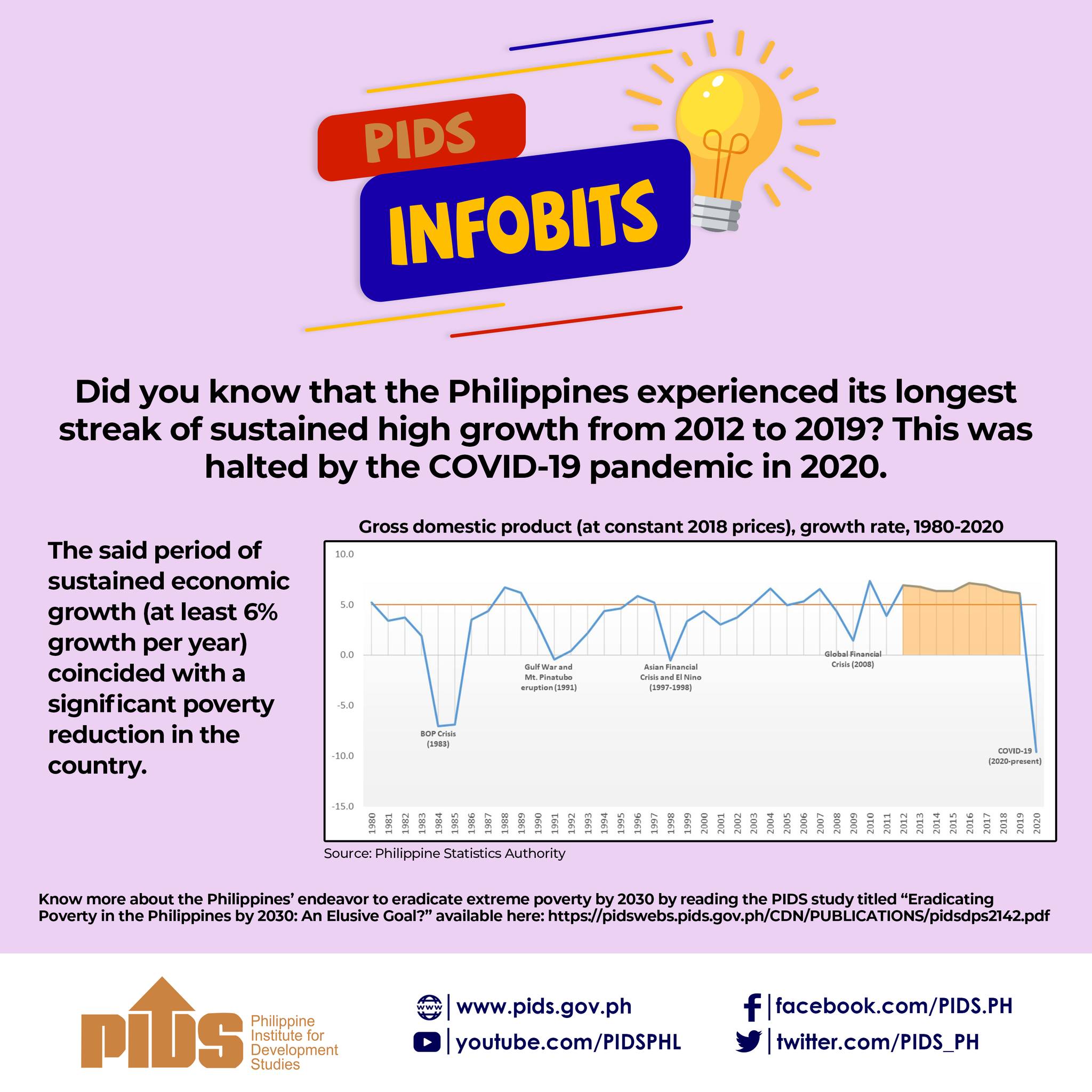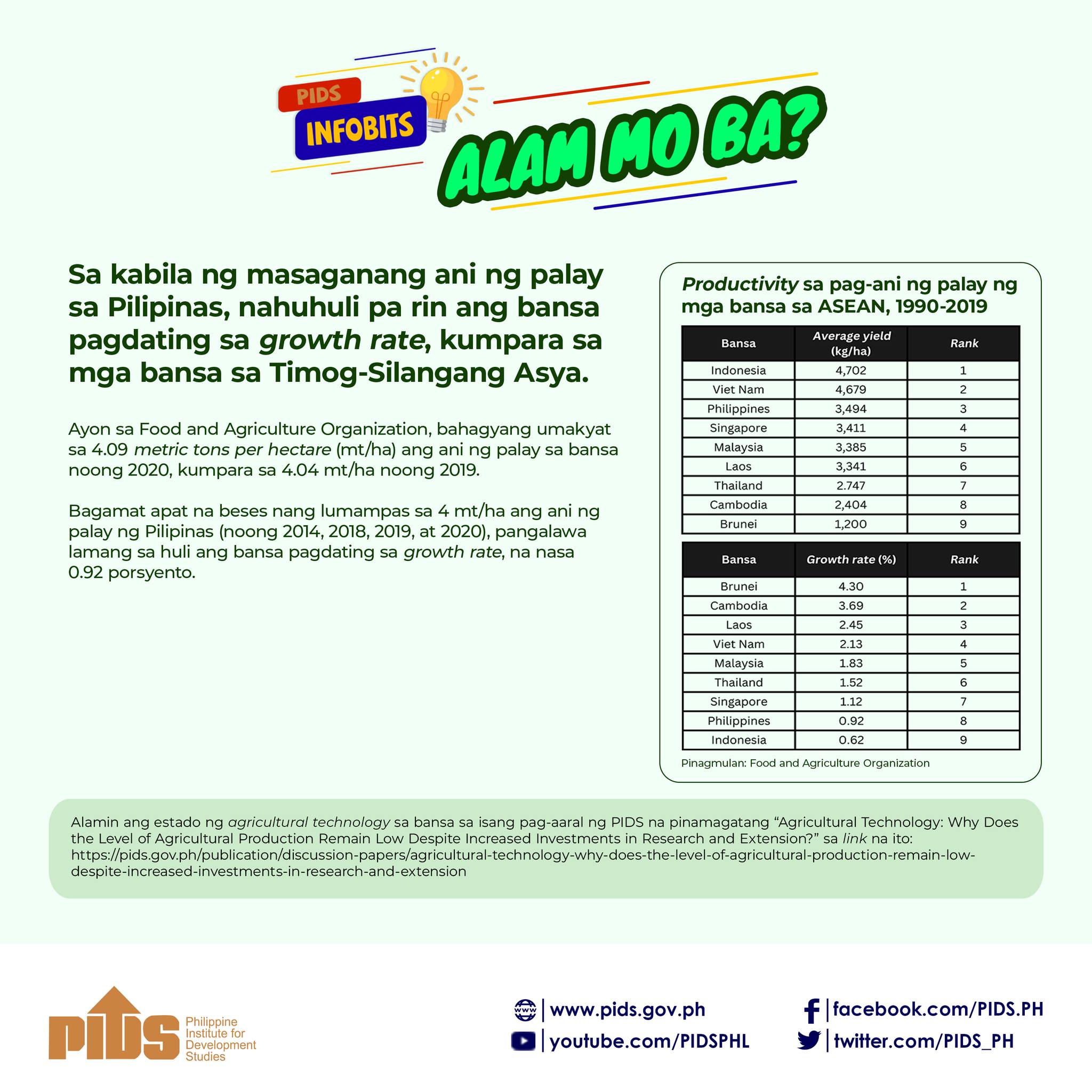PIDS vice president Dr. Adoracio Navarro, however, said that the risk of overlooking important opportunities remain if both the government and the private sector fail to address the challenges and issues hindering a truly inclusive growth.
Navarro told a recent Philippine Business and Economic Outlook seminar that the Philippines is generally in sync with the vibrant expansion of its Asian neighbors.
"The primary growth drivers were household consumption and net exports. Net exports included miscellaneous services, which constituted 79 percent of total export services. On the supply side, the services sector contributed the most. Meanwhile, manufacturing contributed the most to overall growth, a trend that has consistently progressed following the revival of the sector in 2013,” said Navarro.
Philippine Stock Exchange (PSE) President and Chief Executive Officer Hans Sicat said the PSE is anticipating a robust 24 months ahead, in terms of infrastructure build, consumer spending, and in particular, the financial sector.
Sicat painted an image of accomplishments and ripe growth opportunities ahead for the Philippine financial sector. "We’re trading around 11 billion pesos on any given day. It means that the market is growing faster.”
Upon measuring the behavior of publicly-listed firms and their ability to generate revenues and net income for the past three years, figures revealed that publicly-listed firms have grown faster than the economy since 2011. This means, assuming the belief that stock markets significantly represent the growth of the economy, the financial market has outperformed the growth numbers of the real economy, said Sicat.
Sicat considered the level of participation of the market plays relative to the size of the economy as an indicator differentiating developed and developing markets. All the numbers considered, the country is considerably no longer in the underdeveloped market bracket.
Out of all the sectors, mining and oil posted dismal numbers. The government’s choice to focus solely on the green side of things, overlooking the business and employment generation of the sector, contributed to its laggard growth, he said.
Sicat explained that if the country can pull itself together, take advantage of the low oil prices, and help optimize mining operations, the sector could contribute one percent to the country’s GDP.
He allayed fears about bubbles in the burgeoning property sector. The Bangko Sentral ng Pilipinas had put macro policy measures in place, and none of the banking institutions have so far hit any of the warning indicators.
The PSE is looking forward to major improvements in the financial sector’s penetration rate. In the Philippines, only 31 percent of the population have some kind of banking account.//












